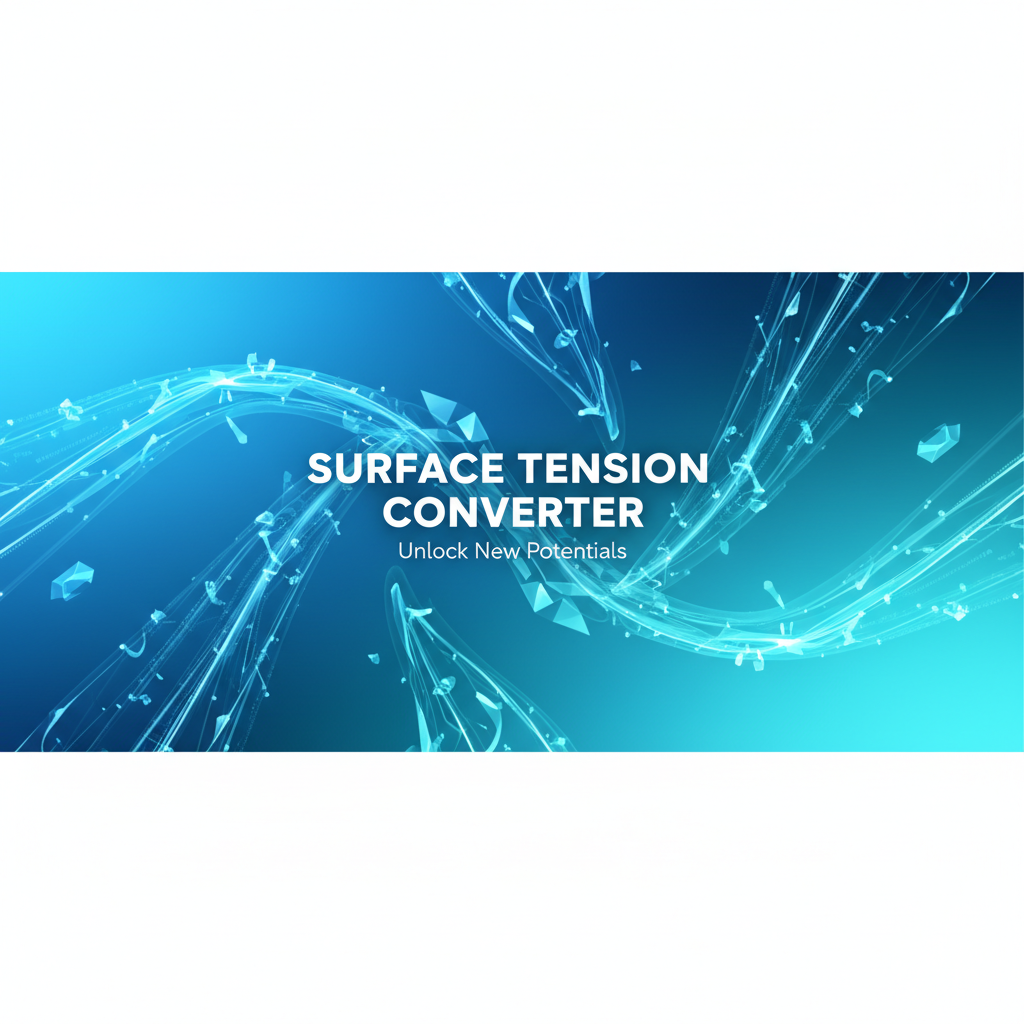
Surface Tension Converter
Surface Tension Converter Conversion Chart
| From | To | Formula (for 1 unit) | Result |
|---|
Quick Conversion Links
About This Tool
This Surface Tension Converter is a tool used in chemistry, biology, and material science. It converts units of surface tension (γ), which is the tendency of liquid surfaces to shrink into the minimum surface area possible. It is a measure of the cohesive energy present at the interface of a liquid. The base unit is newtons per meter (N/m).
Surface tension is what allows insects to walk on water, causes liquids to form spherical droplets, and governs how liquids will behave in contact with other surfaces (wetting). It is a critical property in the formulation of detergents, paints, and in processes like soldering.
Tips & Features
- Two Perspectives: Surface tension can be thought of in two ways: as a force per unit length (newtons per meter) or as energy per unit area (joules per square meter). These two are dimensionally equivalent (1 N/m = 1 J/m²).
- Dynes per Centimeter: In the CGS system, the common unit is dynes per centimeter (dyn/cm). Conveniently, 1 dyn/cm is equal to 1 mN/m (millinewton per meter), and these are the most common units found in literature.
- Water as a Reference: The surface tension of pure water at room temperature is about 72 dyn/cm or 72 mN/m, a relatively high value due to strong hydrogen bonding between water molecules.
Expand your expertise
Recommended deep dives and guides matched to Surface Tension Converter.
Knowledge Base Articles
Solution Concentration Conversion: Complete Technical Guide Comprehensive guide to concentration solution conversion covering theory, applications, and best practices for chemistry, environmental science, and water quality analysis.
Updated 11/4/2025 Electric Conductivity Converter Knowledge Article Comprehensive knowledge guide to electric conductivity conversion principles, practical applications, and industry best practices
Updated 11/4/2025 Molar Flow Rate Conversion: Complete Technical Guide Comprehensive guide to molar flow rate conversion covering chemistry fundamentals, process engineering applications, and best practices for chemical industry professionals.
Updated 11/3/2025 Understanding Fuel Efficiency (Mass) Converter: Complete Guide and Best Practices Comprehensive guide to fuel efficiency (mass) converter covering principles, applications, workflows, and expert tips for accurate unit conversions.
Updated 11/3/2025